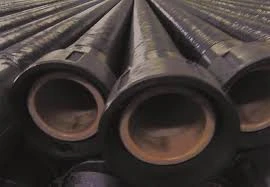
-
 Afrikaans
Afrikaans -
 Albanian
Albanian -
 Amharic
Amharic -
 Arabic
Arabic -
 Armenian
Armenian -
 Azerbaijani
Azerbaijani -
 Basque
Basque -
 Belarusian
Belarusian -
 Bengali
Bengali -
 Bosnian
Bosnian -
 Bulgarian
Bulgarian -
 Catalan
Catalan -
 Cebuano
Cebuano -
 China
China -
 China (Taiwan)
China (Taiwan) -
 Corsican
Corsican -
 Croatian
Croatian -
 Czech
Czech -
 Danish
Danish -
 Dutch
Dutch -
 English
English -
 Esperanto
Esperanto -
 Estonian
Estonian -
 Finnish
Finnish -
 French
French -
 Frisian
Frisian -
 Galician
Galician -
 Georgian
Georgian -
 German
German -
 Greek
Greek -
 Gujarati
Gujarati -
 Haitian Creole
Haitian Creole -
 hausa
hausa -
 hawaiian
hawaiian -
 Hebrew
Hebrew -
 Hindi
Hindi -
 Miao
Miao -
 Hungarian
Hungarian -
 Icelandic
Icelandic -
 igbo
igbo -
 Indonesian
Indonesian -
 irish
irish -
 Italian
Italian -
 Japanese
Japanese -
 Javanese
Javanese -
 Kannada
Kannada -
 kazakh
kazakh -
 Khmer
Khmer -
 Rwandese
Rwandese -
 Korean
Korean -
 Kurdish
Kurdish -
 Kyrgyz
Kyrgyz -
 Lao
Lao -
 Latin
Latin -
 Latvian
Latvian -
 Lithuanian
Lithuanian -
 Luxembourgish
Luxembourgish -
 Macedonian
Macedonian -
 Malgashi
Malgashi -
 Malay
Malay -
 Malayalam
Malayalam -
 Maltese
Maltese -
 Maori
Maori -
 Marathi
Marathi -
 Mongolian
Mongolian -
 Myanmar
Myanmar -
 Nepali
Nepali -
 Norwegian
Norwegian -
 Norwegian
Norwegian -
 Occitan
Occitan -
 Pashto
Pashto -
 Persian
Persian -
 Polish
Polish -
 Portuguese
Portuguese -
 Punjabi
Punjabi -
 Romanian
Romanian -
 Russian
Russian -
 Samoan
Samoan -
 Scottish Gaelic
Scottish Gaelic -
 Serbian
Serbian -
 Sesotho
Sesotho -
 Shona
Shona -
 Sindhi
Sindhi -
 Sinhala
Sinhala -
 Slovak
Slovak -
 Slovenian
Slovenian -
 Somali
Somali -
 Spanish
Spanish -
 Sundanese
Sundanese -
 Swahili
Swahili -
 Swedish
Swedish -
 Tagalog
Tagalog -
 Tajik
Tajik -
 Tamil
Tamil -
 Tatar
Tatar -
 Telugu
Telugu -
 Thai
Thai -
 Turkish
Turkish -
 Turkmen
Turkmen -
 Ukrainian
Ukrainian -
 Urdu
Urdu -
 Uighur
Uighur -
 Uzbek
Uzbek -
 Vietnamese
Vietnamese -
 Welsh
Welsh -
 Bantu
Bantu -
 Yiddish
Yiddish -
 Yoruba
Yoruba -
 Zulu
Zulu
Understanding the Functionality and Benefits of FRP Clarifiers in Water Treatment Systems
Understanding FRP Clarifiers An Innovative Solution for Wastewater Treatment
The growing concern for environmental sustainability and the need for efficient wastewater management have led to the development of various technologies that enhance the treatment process. Among these innovations, Fiber Reinforced Plastic (FRP) clarifiers stand out as an effective solution for wastewater treatment. This article delves into the significance, benefits, and operation of FRP clarifiers within the larger context of water treatment.
What is an FRP Clarifier?
FRP clarifiers are crucial components in the wastewater treatment process designed to separate solids from liquids effectively. Constructed from fiber-reinforced plastics, these clarifiers offer a lightweight yet robust alternative to traditional materials like concrete and steel. The inherent properties of FRP make these clarifiers resistant to corrosion, chemical reactions, and environmental factors, facilitating enhanced durability and longevity.
Advantages of FRP Clarifiers
1. Corrosion Resistance One of the foremost advantages of FRP clarifiers is their resistance to corrosion. Unlike metal alternatives that can deteriorate when exposed to harsh chemicals and wastewater, FRP materials maintain their integrity, thus reducing maintenance costs and prolonging equipment life.
2. Lightweight Construction FRP clarifiers are significantly lighter than their concrete counterparts, which allows for easier transportation and installation. The reduced weight also lessens the structural load on support systems, enabling flexibility in installation configurations.
3. Cost-Effectiveness Although the initial investment for FRP clarifiers may be higher compared to traditional materials, the long-term savings on maintenance, replacement, and operational costs make them an economically wise choice. Their durability translates into fewer repairs and replacements over time.
frp clarifier

4. Versatile Applications FRP clarifiers are versatile and can be tailored to accommodate a variety of wastewater treatment processes. They find uses in municipal wastewater treatment plants, industrial facilities, and even in oil and gas operations where water treatment is crucial.
5. Ease of Installation and Maintenance The lightweight and modular design of FRP clarifiers simplify the installation process. Additionally, their smooth surface reduces the accumulation of dirt and debris, making maintenance more manageable and less frequent.
How FRP Clarifiers Work
The operation of an FRP clarifier involves several critical steps. Wastewater enters the clarifier, where it is evenly distributed across a wide surface area. As the water flows through the clarifier, gravity assists in separating the heavier solid particles from the liquid. The solids settle at the bottom, forming a sludge layer, while the clarified water rises to the top and is collected for further treatment or discharge.
FRP clarifiers often employ additional mechanisms such as flocculation, where chemicals may be added to promote the aggregation of smaller particles into larger ones that can settle more readily. This process enhances the overall efficiency of solid-liquid separation, ensuring cleaner effluent reaches the next treatment stage.
Conclusion
In conclusion, FRP clarifiers represent a significant advancement in wastewater treatment technology. Their numerous benefits, such as corrosion resistance, lightweight construction, cost-effectiveness, and versatility, make them an attractive option for facilities aimed at improving their wastewater management processes. As environmental regulations become more stringent, the adoption of innovative technologies like FRP clarifiers will play a crucial role in ensuring sustainable water treatment practices. The future of wastewater treatment looks promising, driven by advancements that prioritize efficiency, durability, and environmental responsibility. In navigating this evolving landscape, stakeholders in the industry will find that embracing FRP technology is not only beneficial for their operations but crucial for preserving our planet’s precious water resources.
Latest news
-
High-Quality Fiberglass Car Bodies Durable GRP Car & Boat Body SolutionsNewsJul.08,2025
-
High-Quality Fiberglass Dual Lamination Product Manufacturer Durable FRP & GRP Dual Lamination SolutionsNewsJul.08,2025
-
Rectangular Tank with Dimensions for GRP Calculation Custom Fiberglass GRP Rectangular TanksNewsJul.07,2025
-
High-Quality Fiberglass Weir Custom FRP Weir & Fiberglass Tanks ManufacturerNewsJul.07,2025
-
CPVC FRP Pipe A Reliable Choice for Industrial Applications High Strength & Corrosion ResistanceNewsJul.07,2025
-
Fiberglass Scrubber for Effective Cleaning and Stain Removal – Superior Performance in Various ApplicationsNewsJul.06,2025









